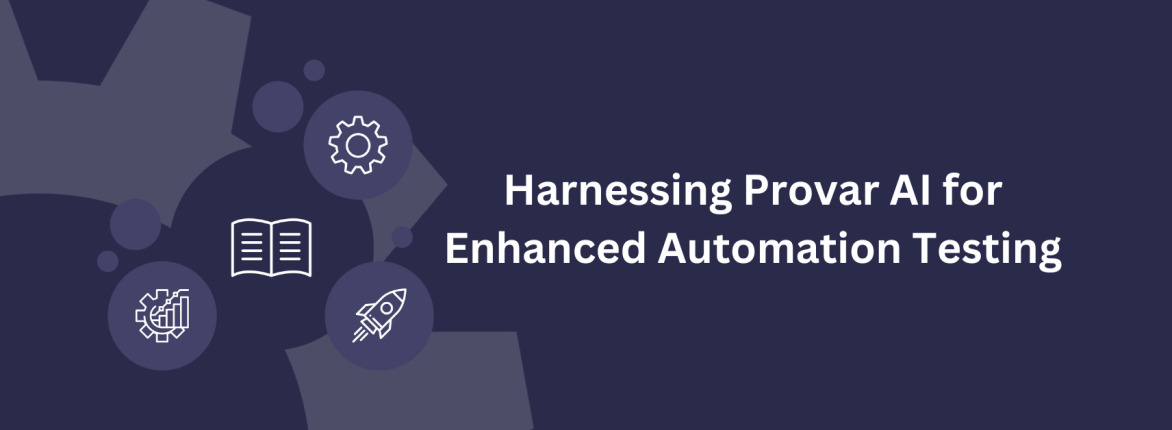If you’re here reading the Provar blog, it’s surely a priority for you to develop a strategy that ensures the quality and reliability of your applications. You likely either already have a testing strategy and are looking to enhance it, or you are doing the initial research to take the first step for your team. Either way, you will want to consider your testing approach for your Continuous Integration and Continuous Delivery (CI/CD) pipelines as a fundamental part of your development workflow.
These pipelines facilitate the seamless integration of code changes, automated testing, and deployment processes, ultimately leading to shorter development cycles, faster time to market, and improved overall product quality. CI/CD pipelines automate the software development lifecycle’s build, test, and deployment phases. Continuous Integration means adding changes to the code to a shared repository regularly. The changes are then checked by running automatic builds and tests. This idea is taken a step further with Continuous Delivery, which sends changes to code directly to different environments, like testing or staging, for extra checking. Continuous Deployment goes even further by putting changes into production automatically once all tests pass.
Why an Automated Testing Strategy is Important for CI/CD
Integrating a comprehensive automated testing strategy is crucial to ensuring the optimal performance of your CI/CD pipelines. Automated testing is a safety net, allowing developers to identify potential issues and regressions early in the development cycle. By incorporating automated tests directly into the pipeline, developers can seamlessly validate code changes and receive prompt feedback on their impact, facilitating a rapid and iterative development process.
Early Bug Detection
One of the primary advantages of integrating automated testing into CI/CD pipelines is the ability to catch bugs before they escalate into more significant issues. Automated tests execute rapidly and consistently, enabling developers to detect and address defects early, when they are typically easier and less costly to fix. This early detection mechanism helps maintain the stability of the codebase and prevents the accumulation of technical debt over time.
Faster Feedback Loops
Automated testing also facilitates faster feedback loops, which is essential for agile development practices. With automated tests running in the CI/CD pipeline, developers receive immediate notification of any failures, allowing them to pinpoint the source of the problem and take corrective action promptly. This rapid feedback loop accelerates the development cycle by reducing the time spent on debugging and rework, thereby increasing overall productivity and efficiency.
Regression Testing Assurance
In addition to bug detection, automated testing is crucial in regression testing. As code evolves and new features are added, there is always a risk of inadvertently breaking existing functionality. Automated regression tests help mitigate this risk by systematically verifying that previously implemented features continue to function as expected. By running these regression tests as part of the CI/CD pipeline, developers can ensure that each code change does not introduce unintended side effects, thus maintaining the application’s integrity and reliability.
Where Provar Automation Comes Into Play
Regarding automated testing in Salesforce, leveraging a robust solution like Provar Automation can significantly enhance your testing strategy. Provar Automation offers advanced capabilities specifically tailored for Salesforce applications, making it an ideal choice for organizations looking to level up their automated testing efforts.
Seamless Integration into Pipelines
Provar Automation seamlessly integrates with CI/CD pipelines, allowing organizations to execute automated tests in their continuous integration and delivery workflows. By incorporating Provar Automation into CI/CD scripts, teams can automate the execution of tests whenever changes are made to the Salesforce application, ensuring that new features or enhancements do not introduce unintended side effects.
Broad Test Coverage
One of the key benefits of using Provar Automation in CI/CD pipelines is its ability to provide comprehensive test coverage across different aspects of Salesforce applications. Whether it’s testing custom UI components, integrations with third-party systems, or complex business processes, Provar Automation’s robust testing framework can easily handle diverse scenarios.
Salesforce-Specific Functionality
Moreover, Provar Automation offers built-in support for Salesforce-specific features and functionalities, such as Lightning components, Visualforce pages, and Salesforce API testing. This ensures that tests accurately reflect the real-world interactions within Salesforce applications, enabling organizations to identify and address issues proactively.
Multi-Environment Support
Additionally, Provar Automation’s CI/CD capabilities enable teams to orchestrate the execution of tests across multiple environments, from development and testing to staging and production. It helps maintain consistency in testing processes and ensures that applications behave as expected across different deployment scenarios.
Conclusion
Integrating automated testing into CI/CD pipelines is essential for maintaining the quality and reliability of Salesforce applications. By leveraging solutions like Provar Automation, organizations can streamline their testing processes, accelerate release cycles, and confidently deliver high-quality software. Embracing CI/CD practices alongside robust automated testing solutions is key to staying competitive, mitigating risk, and ensuring a positive customer experience.
Want to learn more about how Provar Automation can help you test your CI/CD pipelines? Contact us today!










